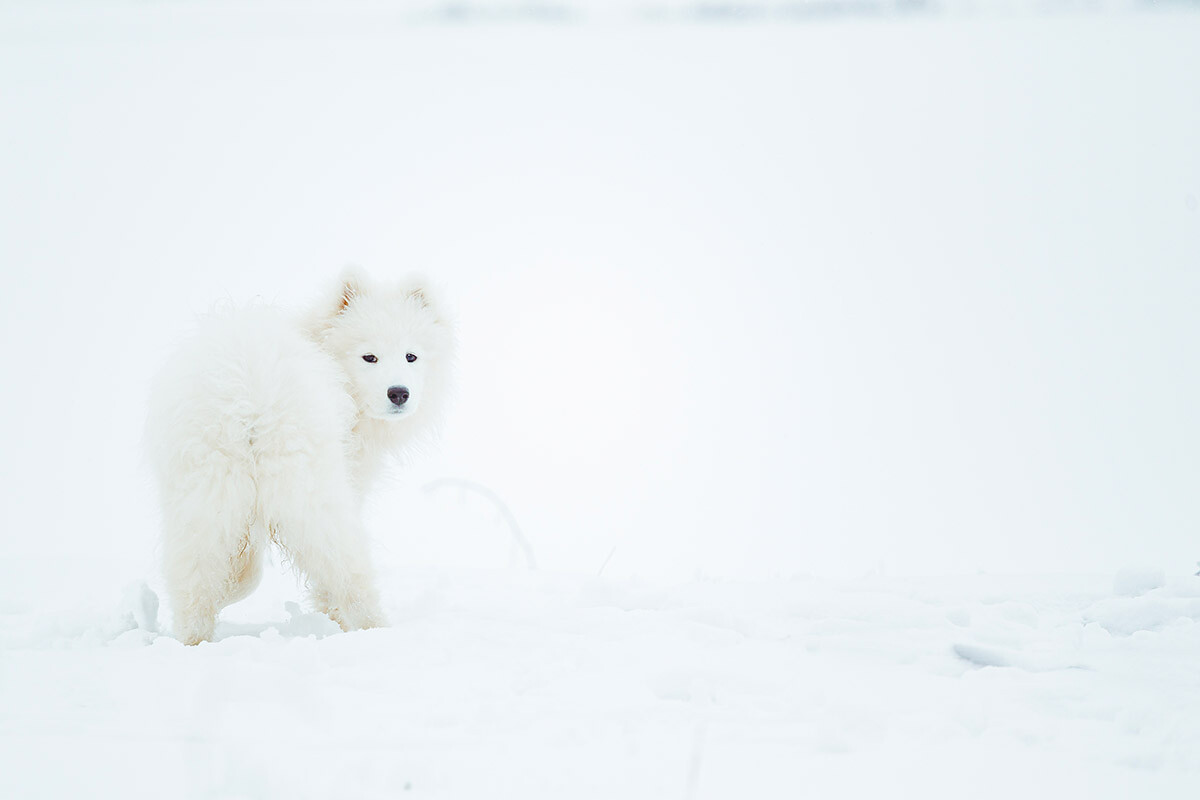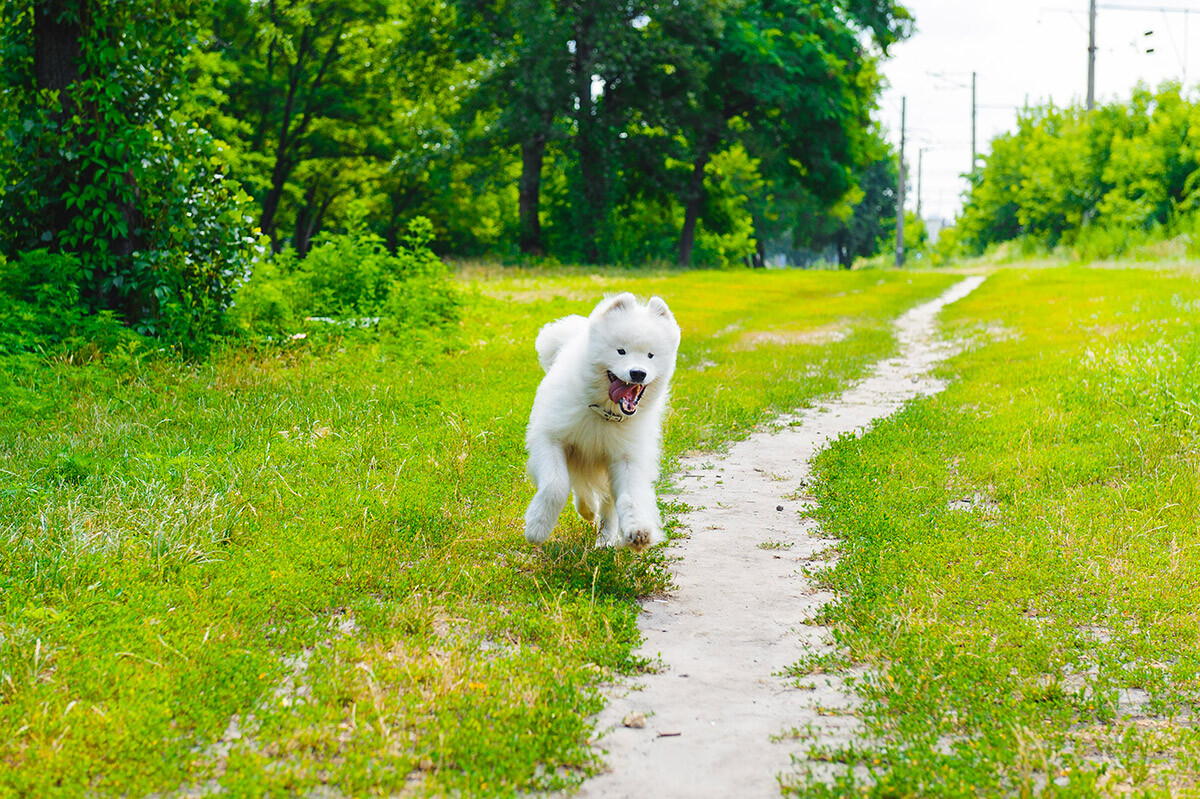The Samoyed Laika: 6 facts about the world's oldest dog breed

The Samoyed is one of Russia’s most ancient aboriginal breeds. For millennia it was a faithful companion of the indigenous peoples of Northern Russia. Even today it remains very popular both in Russia and abroad. After all, it’s the kindest and most sociable of dog breeds!
The sled that moves by itself

Samoyed dogs take their name from the Samoyedic, or Samodeic, peoples who are the ancestors of the Nenets, Enets, Nganasans and other ethnic groups of the Urals and Siberia. According to one account, the word "samoyed" originates from "saam-edne", meaning the "land of the Sámi people". According to another version, it derives from "samo ediny", meaning “people who live in isolation”.
On the other hand, one can sometimes hear the claim (with no scientific basis) that Samoyed dogs got their name because when they’re harnessed to a sled their white fur merges with the snow, creating the impression that the sled is moving by itself. In this case the derivation would be from the Russian root "sam-" meaning "self", plus the verbal root "yed-" that denotes travel or motion in a vehicle.
But these pure white dogs are, in fact, the result of efforts by modern dog breeders. Originally, Samoyeds also had brown and black patches, and were similar to Nenets Herding Laikas, which were also companions to nomadic reindeer breeders in the taiga and tundra. According to one theory, the ancient Samodeic people managed to domesticate the white polar wolf that lived in Arctic regions during the Ice Age (more than 12,000 years ago). In due course, they assimilated and became accustomed to humans, losing their wild temperament and characteristics.

As a breed, modern Samoyeds were derived from the Laika dogs of the Yamal Peninsula (Northwestern Siberia) at the turn of the 19th/20th centuries during the era of epic international Arctic expeditions. The first three dogs brought to Great Britain by zoologist Ernest Kilburn Scott were the forebears of the official breed.
In 1909, Scott founded the first Samoyed Club, which adopted the breed standard. Later, Samoyeds spread to homes in Europe, Russia and other continents. Their popularity was in large part because of their incredible friendliness.
A baby-sitter for the kids

Today, it is common to classify dogs according to different functions. Some breeds are suitable for guarding property, others assist in hunting, yet others are working dogs, and others are decorative breeds. Samoyeds are usually referred to as ‘harness dogs’, but that is only partly true. In olden times, and particularly in the Far North, dogs were needed for everything. They could be harnessed to sleds or taken into the tundra to help look after the reindeer, and warn of approaching wild animals.

In addition, Samoyed dogs also performed the role of baby-sitter for the children. They spent the night in the chum (reindeer hide tent) and allowed the children to sleep on top of them like a pillow. If you hug a Samoyed he seems to go motionless, as if trying not to disturb your repose. Samoyeds only very rarely display any aggression, as a result of which they’re not very suitable as guard dogs. But they can inflict a painful bite if the owner's child is threatened in any way.
They don't like to be alone

Samoyeds are sociable dogs. Historically, they became accustomed to living in a large family alongside adults, children and other dogs. Being left on their own is their greatest fear. That’s why Samoyeds are absolutely unsuitable for people who are frequently away from home. Like huskies, Samoyeds are inclined to loud and protracted howling when their owners are away, (even for a couple of hours.
Despite that, when you look at a Samoyed it seems to be constantly smiling. This is because its mouth naturally curves up at the corners.

As a rule, Samoyeds are very good at getting along with other household pets - not just dogs, but also cats. They’re particularly fond of small kittens, whom they allow to do whatever they want, even sleeping on top of them, which is exactly what cats like to do.
They don't need frequent washing

Samoyeds have thick white fur with an undercoat, but that doesn't mean they only feel comfortable in winter. While the fur protects from the severe cold, it also helps them to avoid overheating on hot days.
A true headache for Samoyed owners while on walks is not the heat of summer, but rather the mud. Like many other dogs, the snow-white Samoyeds simply adore rolling in mud; this is because of their hunting instincts - it's a way of masking their own scent. However, they shouldn't bathe frequently because the water can wash away their protective skin layer, and this could lead to illness. Breeders recommend a visit to the dog groomer, or a bath at home; but no more than twice a year. The good news is that they are hypoallergenic!

Samoyeds of course shed their hair like any other furry breed. Sometimes this is very noticeable, and owners quip that it's simpler to change one's wardrobe and the upholstery on the furniture to all-white than to try and remove the fur. A Samoyed needs to be regularly groomed with a brush.
As it happens, some Samoyed breeders are in the habit of collecting their fur and having it spun into yarn. Very comfortable scarves can be made from it.
Despite their plentiful fur, Samoyeds practically don't smell and don't cause allergies; which in fact is a great rarity for such furry animals.
They need exercise

Samoyeds, like all native breeds, tend to enjoy excellent health! They live for 12-14 years, and are active into old age. But you have to remember that a Samoyed absolutely needs to exercise and run around outside.
It is vitally important for a Samoyed to go for a walk 2-3 hours each day. If you live in a city, it is also recommended that your Samoyed spend a whole day outdoors several times a month.


